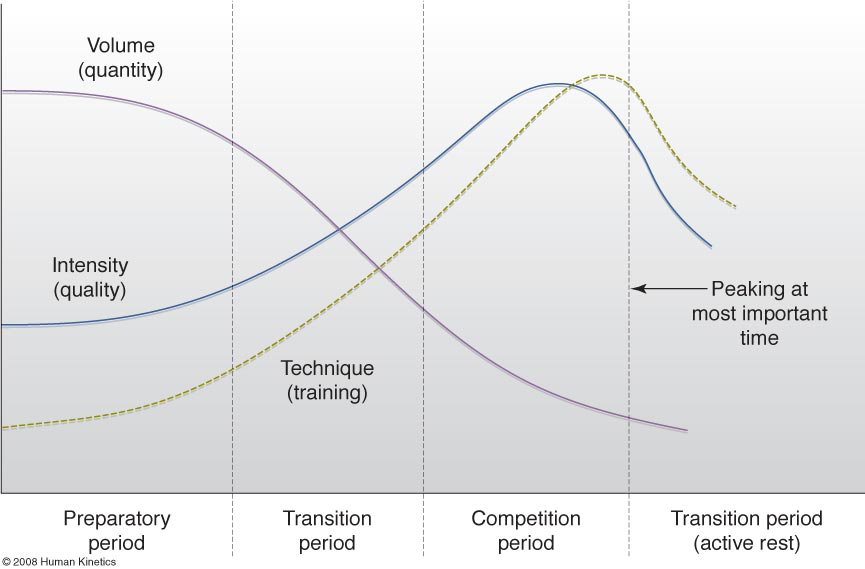Matveyev
traditional, developmental, long sprints, and endurance

There has been much discussion recently about Periodization and its value. I have my opinions but I feel it's important to at the very least look at Periodization as a useful training strategy to plan out your season. Now in my previous blog, I talked about how the models could be used with different event groups in mind. Just like in the world of American football the coach will choose to use a different system best suited for his athletes or get athletes who fit his system. Different models can best be seen in American college football like Georgia Tech's option, Mizzou's spread, or Alabama's single back offense. In the world of track and field, we have a need for different models for all event groups to make the most of the athletes' unique abilities. This week we will highlight Matveyev's (Traditional Model) and its value in planning for the developmental athlete, long sprinter, and of course the distance runner. Matveyev's model as many of us know is based on a gradual increase in load (miles, meters, reps, mins) in the first part of the annual plan with relative low-intensity levels. As the annual progresses the load will reach its peak then eventually drop off fairly dramatically.
As the annual progresses the load will reach its peak then eventually drop off fairly dramatically. Meanwhile, the intensity will rise dramatically at this point and the two factors will cross. Many people call this the aptly named Red zone due to the increased chance of injury at that moment in the annual plan. The developmental athlete- This system works well for young and newly developing athletes because of the gradual increase in both load and intensity. Being too aggressive with young athletes could run them into the ground the sport or doesn't give them enough time to develop all of their bio-motor abilities to see what type of athlete we are training.
Long sprinter- In many ways the Baylor/Hart system embodies the principles of the Matveyev's Model. Coach Hart's system relies on the large increase in work capacity and specific endurance. This system obviously has produced some of the fastest 200/400 people in the world. For more information on the specifics of this plan you view a number of articles on this site. You can even find week to week workouts for different points in the season. I don't recommend cutting and pasting the workouts but it does give you a better understanding the progressions over the course of the season for a long sprinter in coach Hart's system that fit the Matveyev periodization model. Distance- In decades of researching distance
I don't recommend cutting and pasting the workouts but it does give you a better understanding the progressions over the course of the season for a long sprinter in coach Hart's system that fit the Matveyev periodization model. Distance- In decades of researching distance
Distance- In decades of researching distance training the data produced from these studies pointed to an aerobic peak coming after 27 weeks of systematic training. At that point the aerobic athlete can maintain a peak for about a month. In order to maximize these adaptations it takes time. Lots of time and training creates chance for injury. It's important also not to do too much too soon. Its best to have gradual progressions avoid injury. Matveyev's model is almost perfect for these athletes to achieve these biological adaptations and to run fast when in matters most.